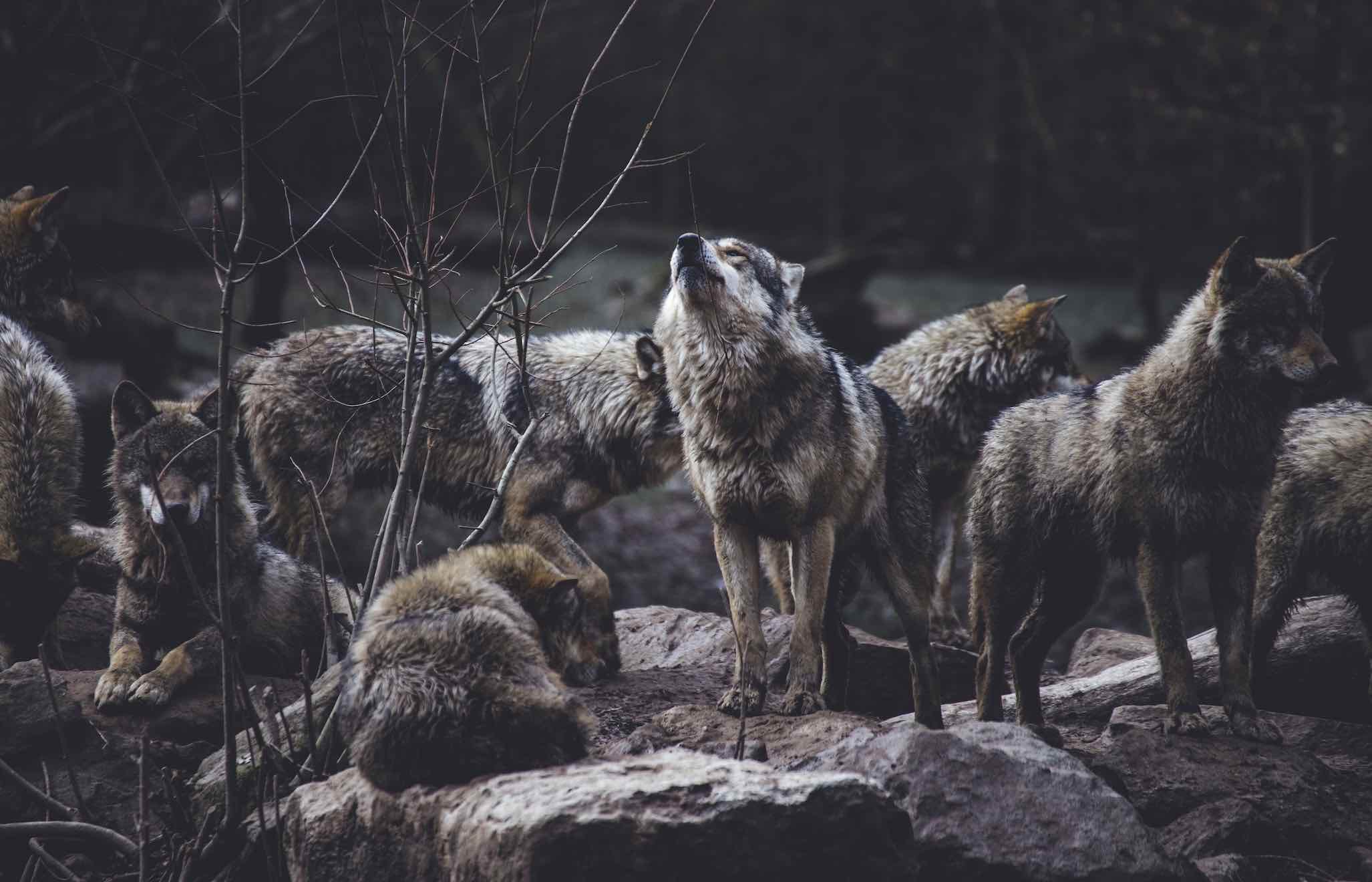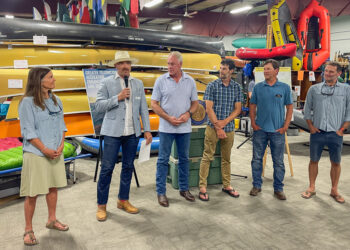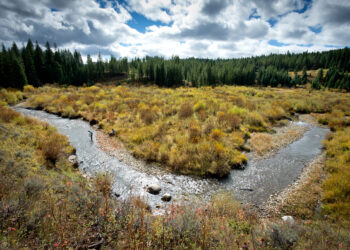By Molly Absolon WRITERS ON THE RANGE

This summer, three of us were hiking in Alaska’s western Brooks Range when we encountered a pack of eight wolves. We were far from any help when they moved toward us, paused, and then disappeared behind a low ridge.
When they re-emerged seconds later, they’d lined up along the crest of the pass we were hiking toward. They looked as if they were poised to attack.
Then … nothing happened. Once the wolves figured out what we were, they turned around and vanished. But for those few anxious moments, I tingled with adrenaline, fearing the worst even as I thought how thrilling it all was.
I knew, and I hope most people know, that wolf attacks on humans are extraordinarily rare. In fact, even minor attacks by predatory animals are rare, yet it doesn’t take much to get our imaginations to run wild with fear of fangs and blood. It’s the realization that we aren’t always at the top of the food chain — that we could end up as some other animal’s dinner.
Years ago, on a camping trip, I participated in a predator-prey game that gave me a taste of that vulnerability. I played a mouse, and everyone else in the game was out to eat me. I spent most of the time slinking between hiding places, worried that any movement might get me spotted. Ecologists call this unease the “landscape of fear,” when everything is suffused with hyper-awareness and a sense of vigilance.
But the evidence doesn’t support that kind of fear of wild animals. Yellowstone National Park has, on average, some 4 million visitors annually. According to park data, just one person is injured by a bear each year on average. Since 1892, bears have killed only 18 people in the Greater Yellowstone Ecosystem.
That doesn’t make the attacks that do happen any less terrifying or tragic, though. This summer, a woman in Montana was attacked and killed in her tent by a grizzly bear; in April, a grizzly killed a man near West Yellowstone, Montana; and in Alaska this June, a sleeping couple was mauled in Alaska’s Kenai National Wildlife Refuge. This is the stuff of nightmares.
During our hunter-gatherer days, wild animals truly posed a danger, and we were right to fear them. But these days, attacks by predators — gruesome and terrifying as they are — cause only a handful of deaths around the planet. Yet there are lots of other animals we should worry about, but usually don’t.
According to a 2019 report by researcher Michael Conover, 47,000 people seek medical attention each year after being attacked or bitten by wildlife, and roughly eight of them die. Most of the culprits are snakes, birds, rodents and raccoons: 27,000 rodent bites — meaning mice, rats and squirrels — versus less than one bite annually by wolves.
Elk attacks resulted in three injuries that required medical treatment, while grizzlies were responsible for 0.8. Alligator attacks were more common, with an average of 9 bites per year and one fatality. Meanwhile, some 30,000 Americans die in car crashes every year.
Still, most of us don’t think about dying when we get into the car, while a lot of us worry when we hike in grizzly country. It’s built in. And encounters with wildlife are increasing as we compete with them, in their own habitat, for limited space and food.
The recent increase in mountain lion attacks is likely due to the blurring of the urban-wildland “interface.” In Colorado, the Parks and Wildlife agency has documented 25 mountain lion attacks since 1990, with four since 2019.
But in our national parks, rangers report a different problem: Tourists get into trouble when they treat wild animals like pets. Tom Smith, biology professor at Brigham Young University, told National Geographic that most bear attacks are avoidable if people just remember that bears react instinctively.
“Bears don’t have a unique response for humans,” Smith said. “If we unwittingly trigger that bear-on-bear response, then it’s full-on, and you’d better be ready.”
I don’t ever want to be attacked by a wild animal, but I appreciate the intensity and humility I feel in their presence. It’s humbling to know that these wild, beautiful animals don’t care who we are or what we do. We have entered their turf, after all, and it’s up to us to watch our step.
Molly Absolon is a contributor to Writers on the Range, writersontherange.org, a nonprofit dedicated to spurring lively conversation about the West. She loves to explore the West from her base in Idaho.














